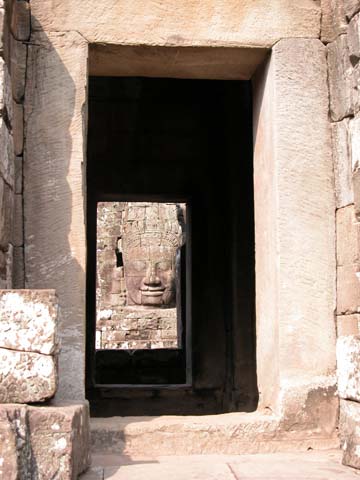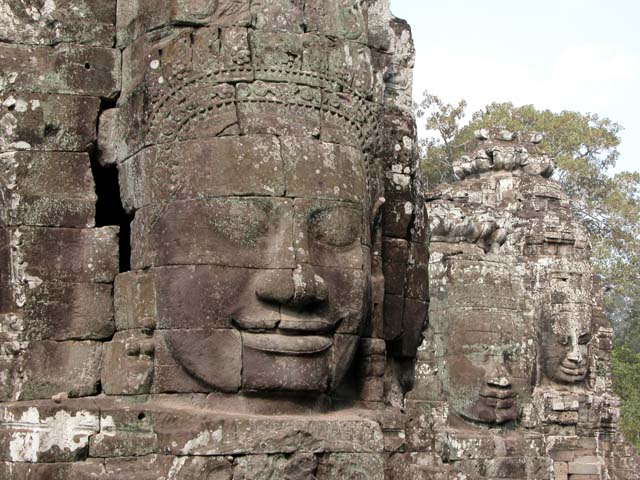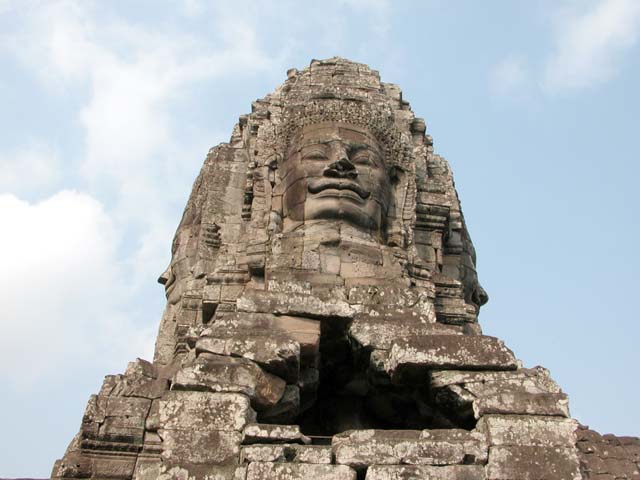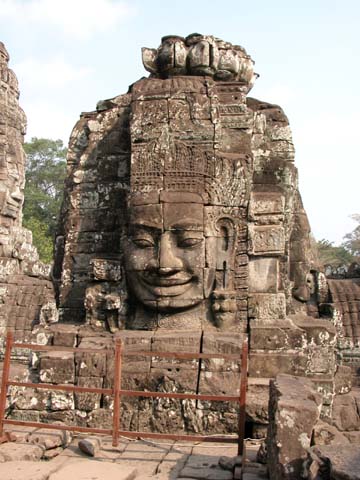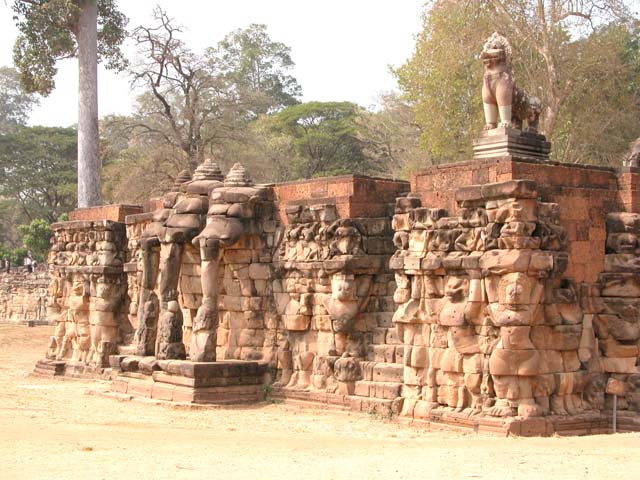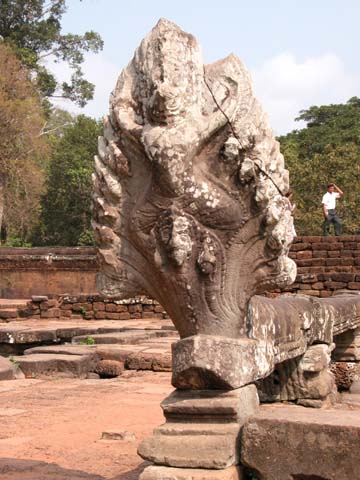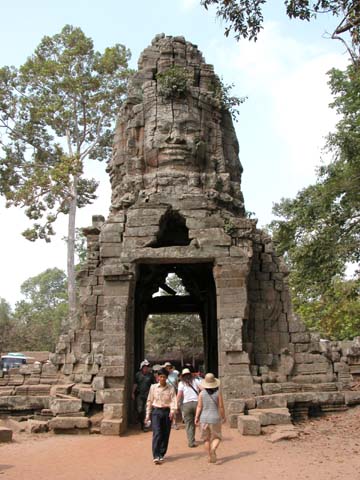Pat's Photo Gallery
Angkor, Cambodia - February 2005Part Three of Seven - Link to Part Four at bottom of the page
The great legacy of the ancient Khmer civilization, the temples of Angkor, cover 77 square miles in northwest Cambodia. Angkor was built between the 9th and 15th centuries. While there is no conclusive explanation, the decline of the Khmer Empire was probably due in part to proximity to the Thais,
frequent invaders of Angkor, and to depletion of the 13th century forests.
The Khmers eventually shifted their capital south to Phnom Penh.
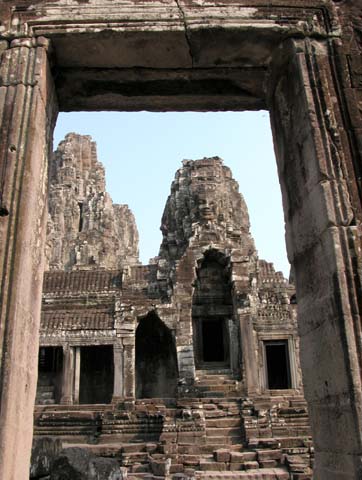
Bayon Temple, geographical center of ancient city of Angkor Thom,
part of the huge world historical site of Angkor
